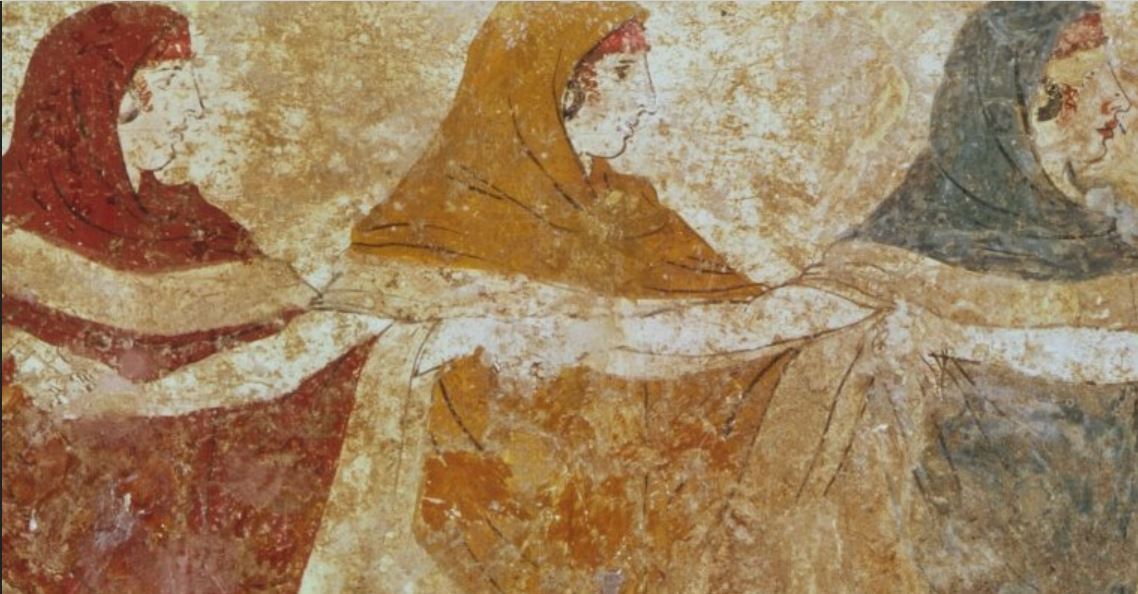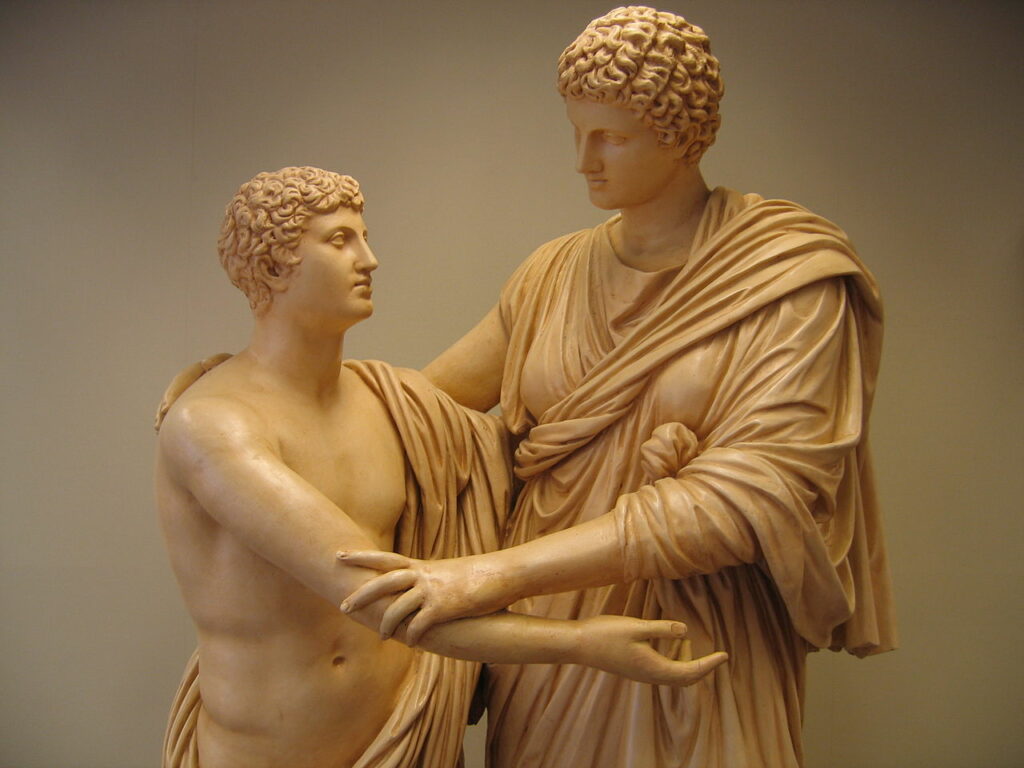by Sean Kelly, Managing Editor, Classical Wisdom
The myth of Elektra, daughter of Agamemnon, seems to have held a particular power on the minds of tragedians – all three of the great Greek playwrights wrote a version which survives to this day. While they are all working with the same core myth, the versions each have some significant differences from one another, which are revealing of the different worldviews of the playwrights, as well as changes in Greek society. By taking a deeper look at these plays we can come to a greater understanding of the respective playwrights, and also the multi-faceted figure of Elektra herself…
Aeschylus’ Libation Bearers
The earliest extant Greek tragedy on this subject matter is the version by Aeschylus. Entitled Libation Bearers (or Choephori in ancient Greek), it is the middle play of the Oresteia trilogy, which was first performed in 458 BC. This play takes place many years after the trilogy’s opener Agamemnon, in which the title character is murdered by his wife Clytemnestra upon his homecoming (or nostos) from the Siege of Troy. Now, his son Orestes and daughter Elektra have grown. Orestes was raised separate from the royal household, but his sister Elektra was brought up by Clytemnestra and her lover Aegisthus, cousin of Agamemnon.
Unlike the other versions of the play we will look at, the character of Elektra in Libation Bearers is more of a supporting role; the protagonist is undoubtedly Orestes. Nevertheless, she is central to the play’s action, particularly the graveside scene. At the beginning of the play, Orestes is returning to his birthplace. He is bound by his moral code to avenge the death of his father, yet he is also forbidden by that same moral code to kill his mother. Trapped by the contradiction, the play follows his journey to a deadly confrontation with his mother. Yet, an important stop on that journey is the graveside of his murdered father.
Here Orestes unexpectedly encounters his sister. Reunited, the two then take part in ritual to call upon the ghost of their slain father. Agamemnon’s ghost doesn’t actually appear in the action of the play. Nevertheless, the ritual is impactful on both siblings: they commit to a plan to murder their mother. Although they conspire together, Orestes faces and kills both his mother and Aegisthus alone. The subject of his guilt and legal culpability is then the cornerstone for the trilogy’s third entry, the Eumenides.
Even though Elektra doesn’t appear again the Eumenides, it was far from the last time the character would appear on stage…
Sophocles’ Elektra
We can’t be certain when Sophocles’ version of Elektra was first performed. It almost certainly followed the Aeschylus version, but we cannot be sure whether the Sophocles or Euripides version came next. The play deals with the same subject matter as Libation Bearers, but while the broad stokes of the story are the same, there are some crucial differences.
Perhaps the most notable departure from Aeschylus is the presence of a third sibling, a sister, Chryosthemis. Whereas Sophocles’ Elektra lives away from the palace, due to her disdain for her mother’s actions, Chrysothemis is much more complacent. She is content to live in the palace, and is much less preturbed by her family’s violent history than their sister. Their dynamic is highly reminiscent of the relationship between Antigone and Ismene in Sophocles’ Antigone play, wherein one sister is driven to action, whereas the other is more passive. The addition of Chrysothemis, and the emphasis on the relationship between the two sisters, places greater focus on the role of Elektra in the violence that follows. Indeed, the play as a whole focuses much more on Elektra’s inner feelings and emotions. She mourns the devastation her family has been put through, but she is also a figure of strong resolve.
Euripides’ Elektra
The Euripides version of the play, also simply titled Elektra, likewise naturally places much more focus on Elektra herself than Libation Bearers. Here, however, her characterization is notably different, and significantly darker than other versions.
There is a suggestion that Elektra may be something of an ‘unreliable narrator’. We don’t actually see any of the cruelty this Elektra insists she experiences at the hands of Clytemnestra and Aegisthus. Wheneever they do appear on stage, it is surprising how unlike Elektra’s descriptions they are. Clytemnestra is concerned for her daughter’s well being, and the similarly considerate Aegisthus is far removed from the figure Elektra describes dancing on the grave of her father.
There is a suggestion that this Elektra is somewhat unbalanced. Furthermore, this version is a something of a zealot for the violence and brutalty of the Homeric code.
Like in Libation Bearers, Orestes arrives to avenge his father. This time, however, Elektra directly takes part in the violence herself, alongside her brother. Whereas previous versions showed a great deal of ambiguity over the potential justification of the murders, Euripides, however, places much greater emphasis on how horrific the violence of the act is. Much like Euripides’ Herakles or Medea, the play functions as a criticism of the Homeric code, by placing the brutality of its violence within a family.
Across the three versions we can see a trajectory, from the somewhat sidelined figure of Libation Bearers, to the more central figure of Sophocles, to the more frenzied interpretation of Euripides. So many Elektras, so little time. The only way to really understand the character is to read them all!












No comments yet. You should be kind and add one!
Our apologies, you must be logged in to post a comment.